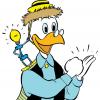Hole shape when using a Seitz jewel-setting-tool reamer?
-
Recently Browsing
- No registered users viewing this page.
-
Topics
-
Posts
-
This watch was damaged when I got it. I didn't break the escape wheel pivot, and I bodged a fix with epoxy to see if I could get it running. I'm not yet ready to get into lathe work, or shellacking jewels, and may never be. But I'm learning plenty with each watch I tackle.
-
Thank you OH, appreciate your input.
-
Thank you for your introduction and welcome to this friendly forum. We all look forward to your contributions and continued involvement.
-
By Neverenoughwatches · Posted
Drat and double drat i was looking forward to the royalties on that idea. -
Compression Spring Various Size. This might be helpful. I have watch furniture restorers and how they go about this problem, they inject glue underneath with a syringe and clamp it, leave over night. Next day remove clamp and it smooth. You could use an iron but be careful not to burn the wood. https://www.ebay.co.uk/itm/265697329513?chn=ps&_ul=GB&var=565484998457&_trkparms=ispr%3D1&amdata=enc%3A1jd_-94ilTHWZLQ3PxHeC1A73&norover=1&mkevt=1&mkrid=710-134428-41853-0&mkcid=2&mkscid=101&itemid=565484998457_265697329513&targetid=1647205088320&device=c&mktype=pla&googleloc=1006662&poi=&campaignid=17206177401&mkgroupid=136851690655&rlsatarget=pla-1647205088320&abcId=9300866&merchantid=119334104&gad_source=1&gclid=Cj0KCQjwir2xBhC_ARIsAMTXk849TnBArEYdgv1DpHf_somCZYmB7ViqD3UtvNJJc_dn4kj0AFxBXngaArSAEALw_wcB
-







Recommended Posts
Join the conversation
You can post now and register later. If you have an account, sign in now to post with your account.
Note: Your post will require moderator approval before it will be visible.